
Rami Ismail is one half of the team best known as Vlambeer, the developer behind such delights as Ridiculous Fishing, Luftrausers, and Nuclear Throne, which just successfully completed its 35-year Early Access period. Getting him to stay in one location long enough to have a conversation may prove difficult, so try talking to him on Twitter instead.
2015 was an interesting year in games. Experiments in structure and narrative that can be traced back to 2012 and 2013 are starting to appear in larger games, with increased confidence and understanding. The achievements and discoveries from the experimental Twine community are slowly seeping into our cultural vocabulary. Genres focused and unfocused, mechanics were sharpened and broke, but so many games this year will be regarded as foundational or influential for things many years to come.
Games like Sunless Sea and Undertale experimented with thoughts about permanence we saw earlier as experiments in games like Save the Date. Games like Until Dawn and Her Story played with ideas about narrative that have been brewing for a while. And there were a lot of games about explosions, which, you know--if they’re good explosions--I’m a big fan of too.
Best Game: Destiny: The Taken King
Last year, I placed Destiny at the top of my top 10 list solely for its amazing grasp of feedback and gamefeel--the feeling of a double jump perfectly executed in first-person, three-dimensional space stuck in my fingers for hours, if not days, after playing. With the Taken King, I’m placing it at the top of my top 10 list for that reason, but also for Bungie’s return to form, and their commitment and increasing understanding of what exactly their ridiculous experiment is and can be.
Favorite touch(es): The ominous introduction of the Taken, showcasing once more Bungie’s mastery of drama and composition amidst the spectacle of first-person games. Using the narrative device of the Taken to allow skirmishes with combinations of enemies that wouldn’t be possible before. The ‘infusion’ system, allowing people far greater variety and agency with their choice of gear.
Least favorite thing: The secret Black Spindle mission, an experiment in skirmish design gone awry, and a rare miss in an otherwise almost flawless series of missions and secrets.
Best AAA-Game: Just Cause 3
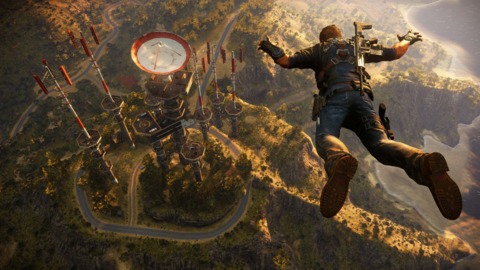
So yeah, there’s no The Witcher 3 here. I love open-world games, but they’re getting a bit stale for me. The Witcher 3 lost me right after the best piece of gaming content I played this year--the Bloody Baron quest. That wouldn’t have made me pull it off my list, until I realized everyone I talked to that played but didn’t finish TW3 stopped right there. The pacing just kind of fell apart there, and I appreciate pacing. There’s also no Fallout 4 here. Fallout 4 is amazing, but it’s also Fallout 3+1. That might be exactly right for a lot of people, but for how solid the game was, it mostly left me looking forward to not-Fallout-3-the-sequel. There’s also no Metal Gear Solid V, because while that was the best Far Cry game I’ve played in forever, it simply couldn’t keep up with itself at times.
No, my AAA game of the year is Just Cause 3. It’s Just Cause 3 because Just Cause 3 understands exactly what it is, paces itself accordingly, and makes everything in the sandbox feed into the purpose of the game. It never pulls the "it feels a bit clumsy, but hey, it’s a huge game" card. It’s a spectacular game, and it just happens to be enormous.
Just Cause 3 is more somber than Just Cause 2 was. Sure, there are more physics™ involved in the exploding things, your infinite parachute now comes with an additional infinite wingsuit, and you’re still capable of tethering a car to a helicopter and use it as a wrecking ball, so that seals the deal.
Favorite touch: Gaining a little extra speed and lift when skimming the surface with your wingsuit, rewarding spectacular play systematically.
Least favorite thing: The final boss fight, which shows once again that Just Cause 3 really is at its best when you feel you came up with what’s happening, rather than the creators.
Best Atmosphere: Undertale
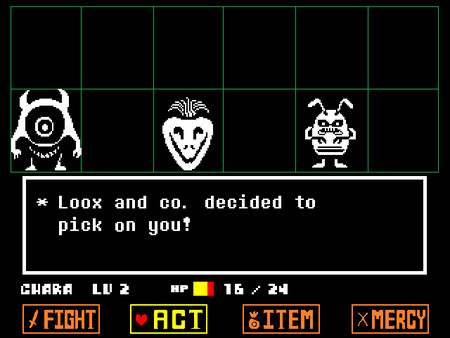
Undertale plays with legacy and narrative and expectations and mostly structure. Undertale is not even close to a flawless game, but who cares if what you walk away with is that you’ve played a game that has never existed before.
Favorite touch(es): Making every character--friendly or hostile--feel like a fully thought-out persona and extending the effects of a playthrough to future playthroughs "permanently." There are so many interesting experiments happening, and they somehow all work together as a coherent whole.
Least favorite thing: Sometimes, for a game so strongly about narrative, Undertale feels overly mechanical.
Best Emergent Territory: Downwell
Downwell manages to take the structure of a roguelike and distills it to an essence so pure that even Spelunky might have to yield to it. It’s a rapid succession of thinly separated randomized scenarios and skirmishes, scenarios you can deal with in different ways dependent on choices from random offerings you’ve made before. If you mess up, it’s back to the top of the well. At the core, Downwell seems simple, but the subtleties of its design are numerous.
Favorite moment: Realizing that the store bubbles allow you to land in a store without losing your combo, finishing it for the first time and learning why your character jumped down into the well in the first place.
Least favorite thing: The sense of progression is dulled a bit by a lack of environmental variety.
Best Whimsical: Snakebird
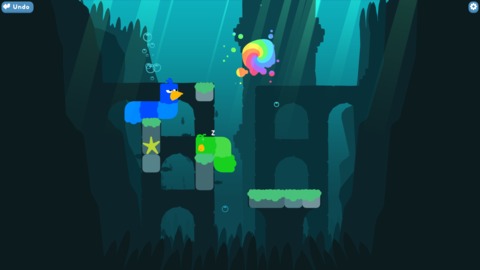
I genuinely don’t know how to describe Snakebird, and since I can’t really describe it, I’ve taught myself a simple routine to explain it.
It’s a cute puzzle game that kind of goes like this:
Level 1: Ha! Level 2: Ah. Level 3: Oh. Level 4: Uh?
In the span of just a few levels, Snakebird introduced a few simple mechanics and ramps the difficulty up to the point where simply trying won’t do you too much good anymore. It is not a punishing puzzle game, in that it allows an infinite undo and restarts, but even with those available, you’ll have a rough time solving many of the puzzles. When things "click," though, it feels like a little personal victory. Take that, you cute bird-snakes with your adorable animations.
Favorite touch(es): The little animations on pretty much every single object in the game for pretty much every type of interaction.
Least favorite thing: A few puzzle elements, such as the movable blocks, are poorly communicated, and when you figure them out feel less like "part of the puzzle" and more like "oh come on, game, really?"
Best Multiplayer: Rocket League
Rocket League is the perfect game-between-games-game. It’s fast, it feels amazing to control, and each match is an emotional rollercoaster, sometimes complete with a plot twist. In many ways, Rocket League is the perfect entry-level sports game--it’s simple to explain and play, but allows for as much depth as you can muster the mental brain space for.
Favorite touch(es): Rocket League makes every action that works out look and feel intentional, even if it was a complete fluke.
Least favorite thing: Rocket League makes every action that works out against me look and feel intentional, even if it was a complete fluke.
Best B-Game: Until Dawn
I didn’t like playing Until Dawn. I don’t really like horror games. I don’t even like the horror movie tropes Until Dawn is based on. But I just can’t write a list like this without mentioning this one. It takes the Telltale "they will remember this" mechanic, but it also immediately turns it into something mighty ambitious. Every moment, every innocent action, feels like it can trigger something terrifying, and the worst part is you don’t know whether that is now or hours from now. You might know that idea as the ‘Butterfly Effect’, and clearly so did the developers, because the game just can’t stop talking about butterflies.
Favorite touch(es): Until Dawn’s butterfly--oh god--effect is applied subtly, in ways you can’t predict unless you’ve played it before. The moment things snap together, and you suddenly understand the chain of events that leads up to an unfortunate death or narrow escape, that feels great.
Least favorite thing: Until Dawn feels like a game made for motion controllers, because it asks you to do silly things with your non-motion controllers a lot. It ends up feeling out of place, which is a shame, because the few times it does work, it’s amazing.
Best Indie: Her Story
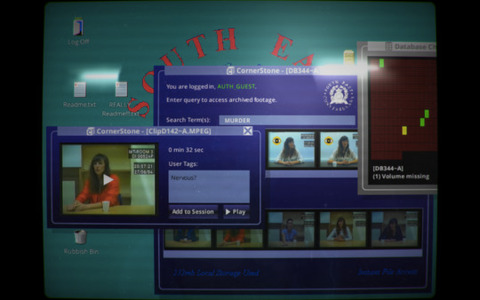
Her Story is brilliant for many reasons. It’s an FMV game with great acting. It’s a clever game that allows you to figure things out yourself. It’s an atmospheric game that nails the atmosphere. The design is built around an extremely clever core limitation in the search engine that’s central to the game. There’s so much to love about Her Story, and there’s very little you can criticize it for.
Favorite touch(es): The fluorescent lights reflected in the screen are an amazing detail. They’re reflections of a world you’re presumably in, but to see those they’d technically have to exist ‘behind you’ in the real world. I don’t know. I just loved that detail.
Least favorite thing: Her Story is a story I’ve heard before.
Best Mobile: Prune
Prune is all you could hope for in a mobile game. Short play sessions without feeling dumbed down. Accessible to everyone, but offering rewards on several levels of play. Simple and gorgeous. Prune exceeds Monument Valley at being the Monument Valley of 2015.
Favorite touch(es): The chime when a flower grows punctuates an otherwise brilliant and sad audioscape.
Least favorite thing: The fast-forward button is in the way of where gameplay inputs can happen.
Best …:
I guess I have to pick a tenth game.
If we’re going to be cynical, we’ll all be playing VR pachinko MOBAs before 2016 is over. Without splitscreen, apparently. But it’s hard to be cynical when there are so many games I loved this year. The first game I loved was a jam game called Naut, just eight days into the year. I finally got into Rock Band 4, and immediately learned that drums are great, but limb independence takes practice. I was impressed by indie games like Galak-Z and Life is Strange and Ori and Invisible Inc. and Everybody’s Gone To The Rapture, games pushed the boundaries of what we think of as "indie." Crypt of the Necrodancer and N++ and Axiom Verge stole more of my hours than I’d like to admit. Super Mario Maker and Splatoon showed us that Nintendo is still on point. Square Enix’s mobile team nailed it with both of their entries in the Go series. The Beginner’s Guide was the most post-modern game-about-games I ever played.
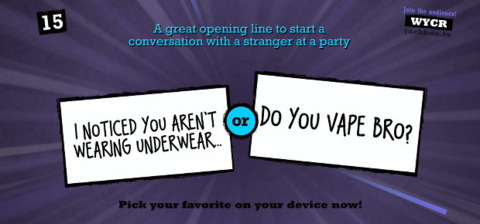
Yeah, it was a pretty lovely year in games, really.
Bloodborne did what FROMSoftware does, Halo 5 did what Halo does (without splitscreen!) and Black Ops III did what Black Ops does (with splitscreen!).
Splitscreen turned out to be a big deal to me this year, and there’s one game that lets multiple players play on one screen just a little bit better than others. My tenth pick is going to be The Jackbox Party Pack 2. I don’t think I like it as much as the original pack of five games (Drawful being my absolute favorite), but between Fibbage 2, Quiplash and Bidiots, I’ve had more than enough hours of fun with my friends with it. The Twitch integration is subtle (a rarity!) but well-executed (even more rare!), and the game makes me excited for the future of Twitch integration and odd social games for groups.